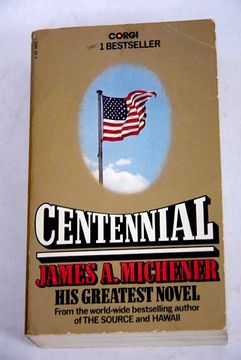

speaking of characters, there's a HUGE cast, but amazingly, I could remember them all! Some were extremely despicable (as they were meant to be) and some really stole my heart. Each chapter reads like a short story, tying in past characters and events to those newly introduced Ģ. , Centennial has been officially incorporated as a city in 2000 - it's a suburb of Denver!) Each chapter begins with a map pertinent to a specific time period (which I would frequently refer to) and ends with Vernor adding interesting notes to the US editors. Lewis Vernor, is commissioned by US magazine in 1973 to research the history of the fictional town of Centennial, Colorado (according to my Goodreads friend. In short, a fictional history professor, Dr. Michener, inspired by true events in Colorado's history, used an interesting writing format. since I read Lonesome Dove around this time last year, I wanted to see how the two compared and,ġ.

I reached my Reading Challenge goal already ģ.

Woohoo! I DID it! The longest book I've read this year, even longer than Lonesome Dove! I finally finished it on Christmas Eve Day!Ģ.

But he said in his 1992 memoirs that the circumstances of his birth remained cloudy and he did not know just when he was born or who his parents were. Michener's entry in Who's Who in America says he was born on Feb. Michener Art Museum in Doylestown, Pennsylvania, best known for its permanent collection of Pennsylvania Impressionist paintings and a room containing Michener's own typewriter, books, and various memorabilia. Toward the end of his life, he created the Journey Prize, awarded annually for the year's best short story published by an emerging Canadian writer founded an MFA program now, named the Michener Center for Writers, at the University of Texas at Austin and made substantial contributions to the James A. His first novel, Tales of the South Pacific, which inspired the Rodgers and Hammerstein musical South Pacific, won the 1948 Pulitzer Prize for Fiction. James Albert Michener is best known for his sweeping multi-generation historical fiction sagas, usually focusing on and titled after a particular geographical region.


 0 kommentar(er)
0 kommentar(er)
